The Routes
If there is something inherently linked to Pilgrimages, it is the fact of walking towards the sacred places. The “Virgen de la Barca de Muxía” Sanctuary is no exception.
One of the routes with the greatest history and that marks this place as a not-to-be-missed destination for pilgrims is the Fisterra-Muxía Camino de Santiago. The legend of the Virgin appearing to the Apostle James is profoundly linked with the Jacobean tradition in this transcendent destination of the End of the Way of St. James.
Starting in the Middle Ages, religious fervour towards the Sanctuary of A Barca drove pilgrimages beyond Compostela, attracting walkers to this Land’s End. The unique Fisterra-Muxía Way, reversing the traditional direction, continues to add international pilgrims, consolidating Muxía as a highlight for those who seek to extend their spiritual journey and connect with nature and Marian devotion. In 2024, more than 2,200 pilgrims walked this route, reflecting its growing global appeal.
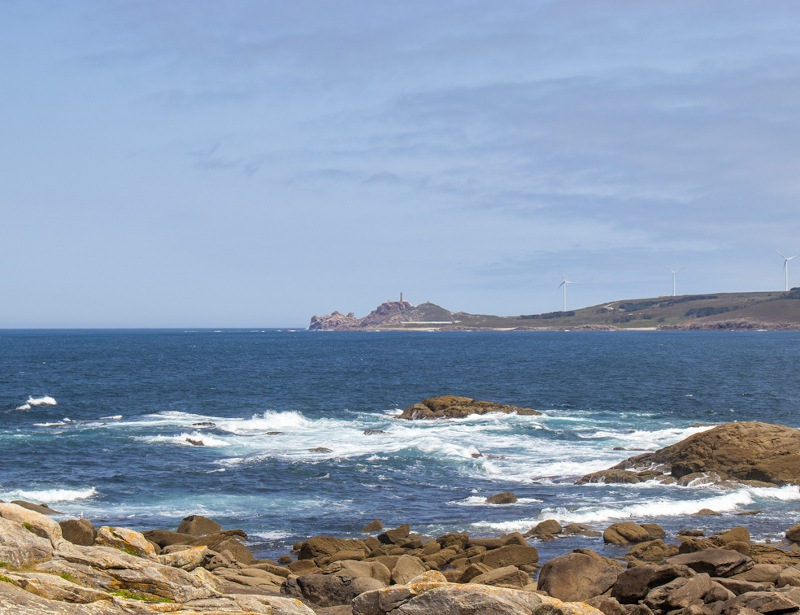
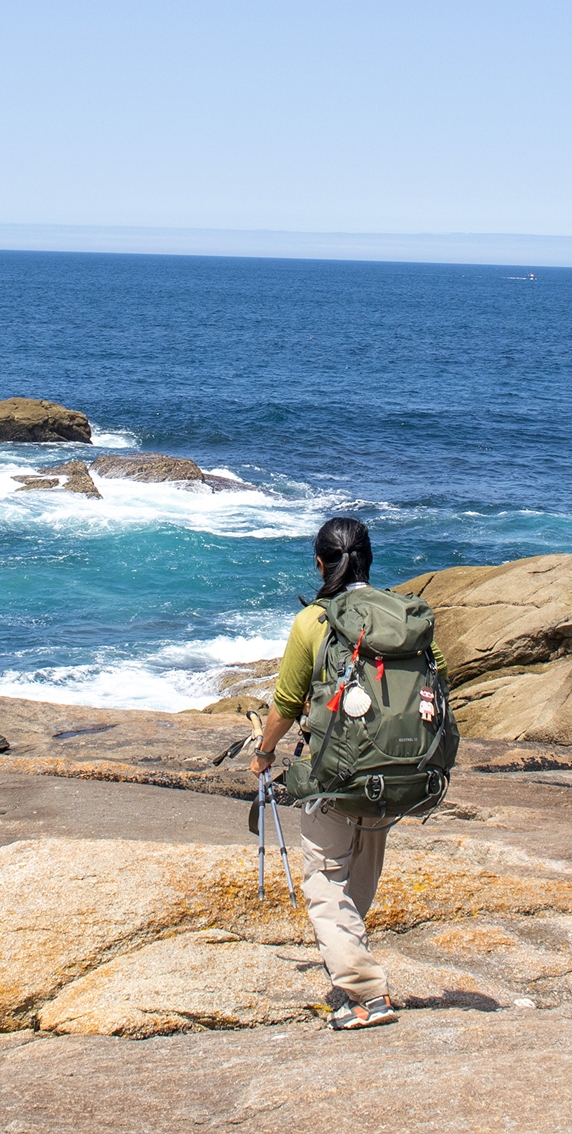
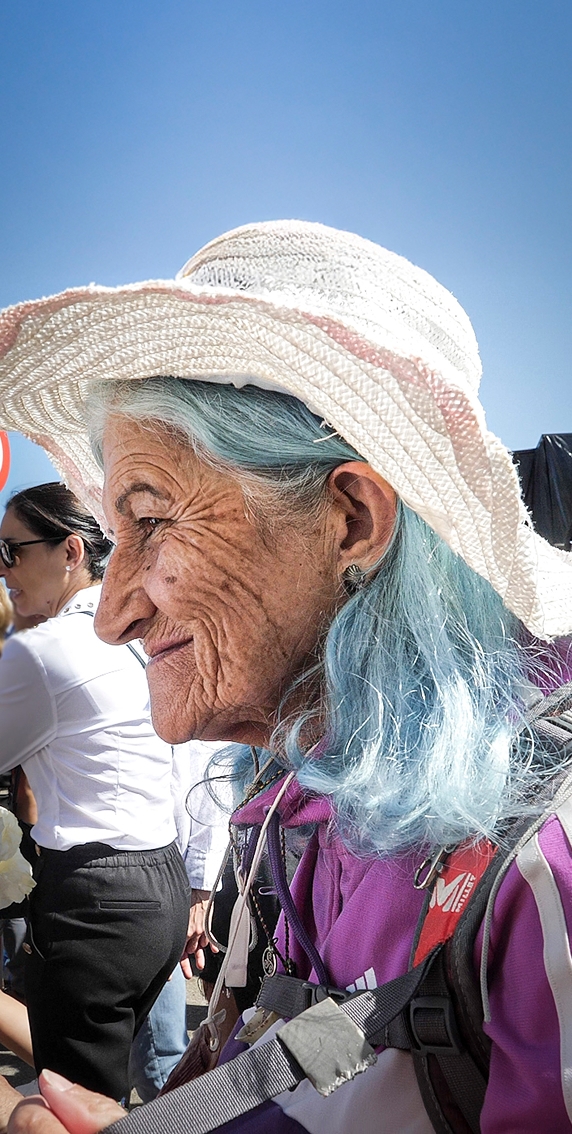
The intense devotion to the Virgin of A Barca also gave rise to the historic “Caminos de la Barca,” ancestral trails that connected Muxía with the region’s main towns. These routes, detailed historically, include various itineraries that testify to the constant influx of pilgrims from the Costa da Morte and neighbouring regions. From the northern coastal route that meandered from A Coruña, through the inland route of Terra de Soneira, to the roads that connected Mazaricos, Dumbría, Cee, Corcubión and the southern coastal route from Fisterra (culminating in the evocative “Camino de la Piel”), these paths of faith keep alive the essence of the pilgrimage to the Virgin of A Barca, deeply rooted in local tradition.
La intensa devoción a la Virgen de la Barca también dio origen a los históricos Caminos de la Barca, senderos ancestrales que conectaban Muxía con las principales poblaciones de la región. Estas rutas, detalladas históricamente, comprenden diversos itinerarios que testimonian la constante afluencia de romeros de la Costa da Morte y comarcas vecinas. Desde la ruta costera del norte que serpenteaba desde A Coruña, pasando por la ruta interior de la Terra de Soneira, hasta los caminos que conectaban Mazaricos, Dumbría, Cee, Corcubión y la ruta costera sur desde Fisterra (culminando en el evocador “Camino de la Piel”), estas vías de fe mantienen viva la esencia de la peregrinación a la Virgen de la Barca, profundamente arraigada en la tradición local.


Fisterra-Muxía
Deeply rooted in the legend of the Virgin appearing to the Apostle James, the Jacobean tradition and, consequently, the Camino de Santiago, have a transcendent destination in Muxía. The religious fervour that emanates from the Sanctuary of A Barca and its connection with the disciple of Jesus, whose remains lie in the Cathedral of Santiago de Compostela, drove pilgrimages as early as in the Middle Ages to these shores of Finisterrae (Fisterra) and to Muxía itself. Devotion to the Virgin of A Barca thus became a powerful magnet, offering the walkers a new goal in their spiritual quest.
Historically, pilgrims sought to complete their transcendent experience by extending their route from Compostela to the western tip of the Iberian Peninsula. Over time, this itinerary attracted a growing number of walkers, a trend that continues to flourish today.
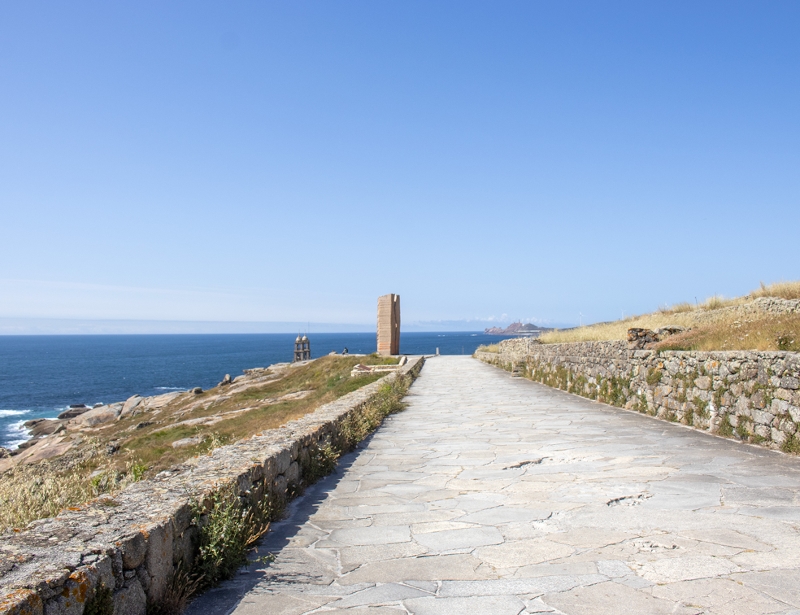
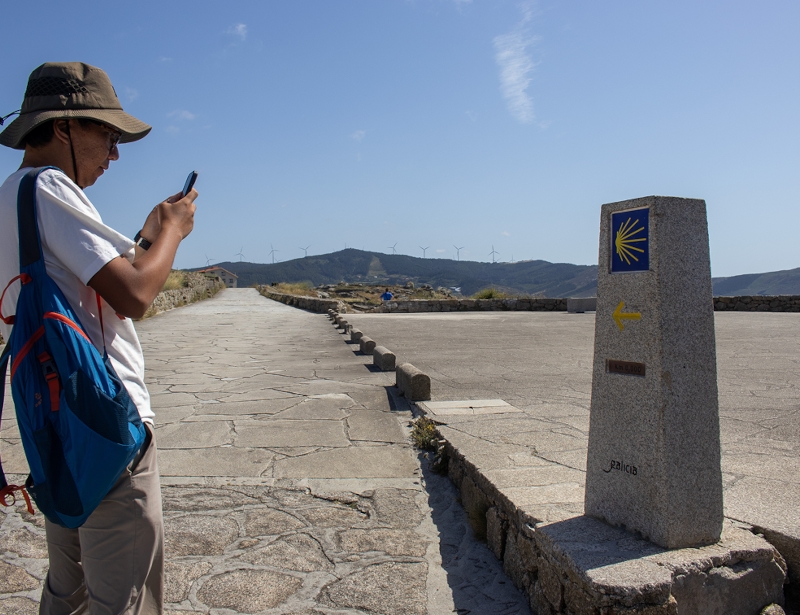
The unique Fisterra-Muxía Way stands out as the only one of the Jacobean itineraries that reverses the traditional direction, taking the Galician capital not as its final destination but as a starting point. Such is the significance of this route, conceived as a natural extension of the Jacobean experience after arrival at the Cathedral, which attracts a constant flow of pilgrims throughout the year. In fact, in 2024, a total of 2,255 people walked this itinerary, a notable increase of 27% compared to the previous year. Of these, 913 were international pilgrims, representing a significant 42% of the total, which underlines the growing global interest in the Sanctuary of A Barca.
According to statistics from the Pilgrim’s Office, the ten main countries of origin of the walkers of the Fisterra-Muxía Way are Portugal (6.74%), Italy (4.66%), the United States (3.12%), the United Kingdom (2.44%), Germany (1.76%), the Netherlands (1.63%), Ireland (1.63%), Slovakia (1.54%), France (1.45%) and Puerto Rico (1.36%).
Muxía and its Santuario of A Barca have established themselves, as well as being an essential destination for those looking to extend their spiritual journey beyond Santiago. The Fisterra-Muxía Way offers a unique opportunity to connect with the legend, the wild nature of the Costa da Morte and the deep devotion to the Virgin of A Barca.
“Via Mariana”
The “Virgen de la Barca” Sanctuary is also the end point of the Portuguese-Galician “Via Mariana.” It is an itinerary, about 400 kilometres long, which starts from the Church of Nosa Senhora do Sameiro, in Braga (Portugal), travels through the north of Portugal before crossing the provinces of Pontevedra and A Coruña until it reaches the church in Muxía.
The itinerary includes a total of 10 Marian churches, namely: Nossa Senhora do Sameiro, Santa Maria de Braga, Nossa Senhora da Paz and Nossa Senhora da Peneda (in Portugal); Nuestra Señora de Franqueira, Santa María de Aguasantas and Milagros de Amil (in the province of Pontevedra), Nuestra Señora da Escravitude, Nuestra Señora del Portal and Nuestra Señora de la Barca (in A Coruña).
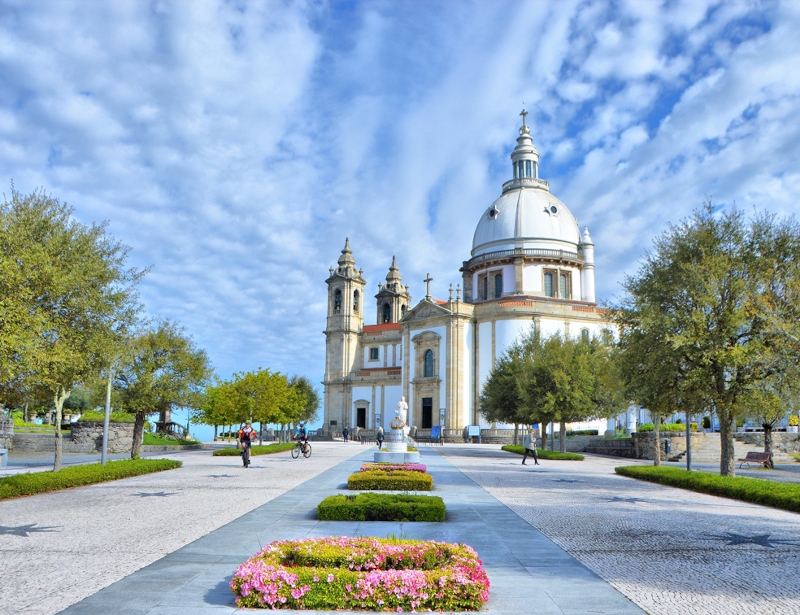
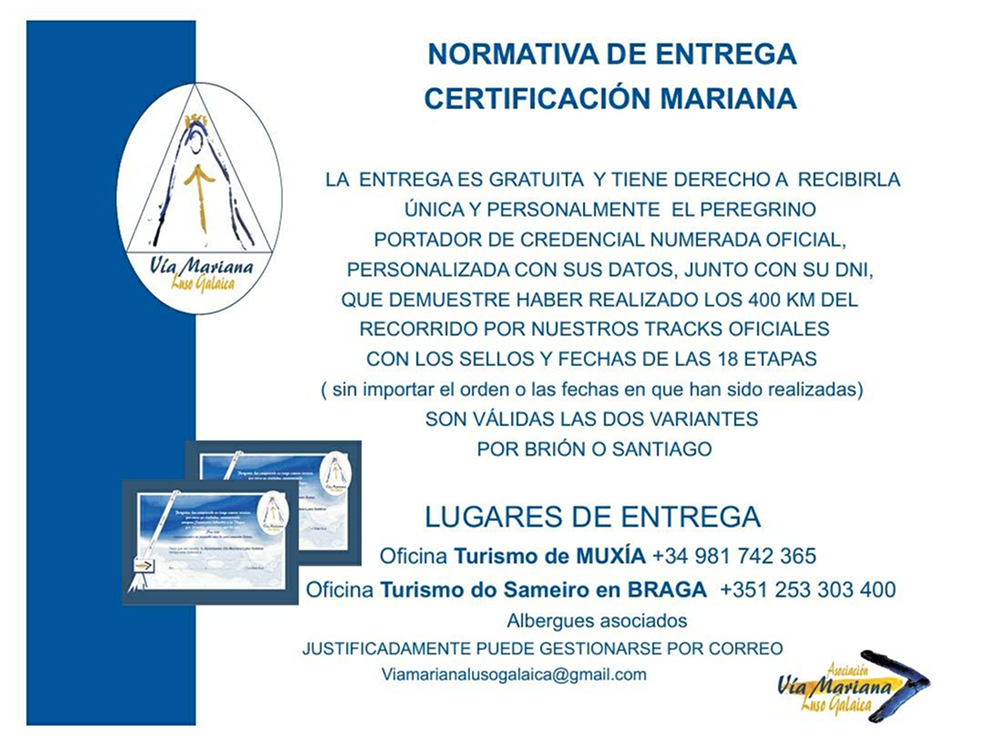
As in the case of the Camino de Santiago, the completion of the route and the passage through each of the main stages of it must be recorded in the credential of the Portuguese-Galician “Via Mariana.” In addition, both at the starting point (Braga Tourist Office) and at the end (Muxía Tourist Office) you can pick up the Marian Certificate, which certifies that you have completed the entire route between both points. It is issued free of charge, as long as the pilgrim’s credential has been corroborated.
You can download other information publications about this itinerary here:
“Caminos de la Barca”
The deep devotion to the Virgen of A Barca and the vibrant atmosphere of its pilgrimage gave rise to the ancestral “Caminos de la Barca.” These routes, many of which followed the paths that once connected Muxía with the important cities of A Coruña and Santiago, arose from the constant influx of pilgrims coming not only from the various corners of the Costa da Morte, but also from neighbouring regions such as A Barcala or Muros-Noia.
As detailed by the historian Xan X. Fernández Carrera in his work “A Romaría da Barca,” there are up to six historical paths that converge at Muxía’s Sanctuary of A Barca, each with its own history and charm:


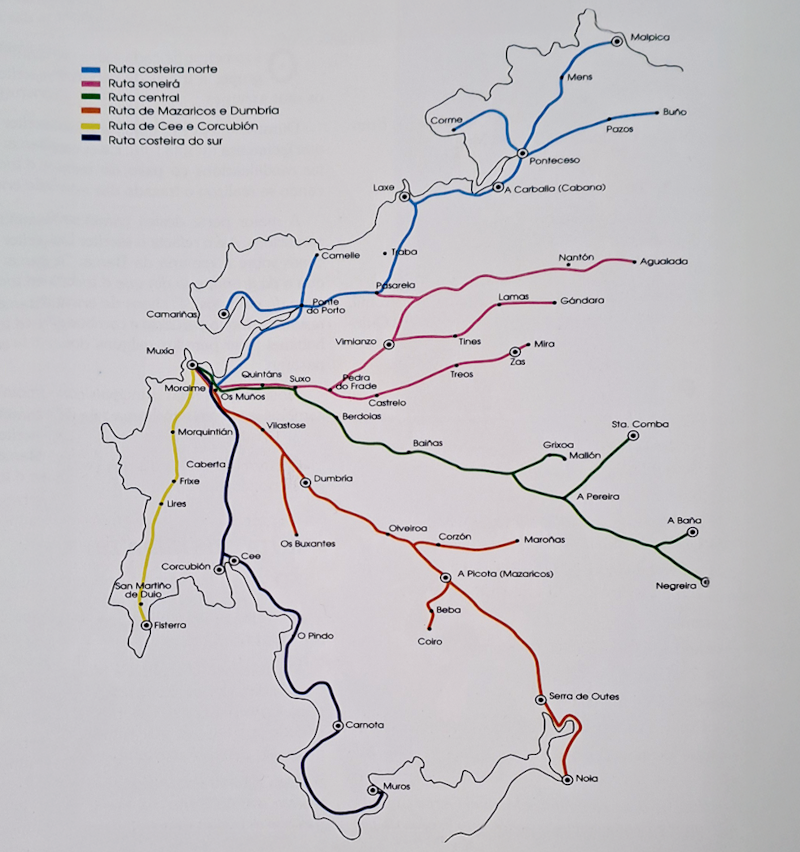
- Northern Coastal Route: It linked the city of A Coruña with Muxía, winding through the picturesque towns of Malpica, Ponteceso, Laxe, Ponte do Porto, Camariñas and, finally, Muxía.
- Soneirana Route: One of the busiest, embracing the heart of the Terra de Soneira region, which includes the municipalities of Vimianzo, Zas and Camariñas, where the tradition of walking to the “Virgen de la Barca” Festival is deeply rooted.
- Mazaricos and Dumbría Route: This itinerary shares sections with the old Fisterra-Muxía Camino de Santiago, even extending to the regions of Negreira, Serra de Outes and the Ria of Muros-Noia.
- Cee and Corcubión Route: A very popular coastal path that runs along the seaside, especially in the section between Muros and Cee, towns with a strong tradition of mass pilgrimages to the “Virgen de la Barca” Festival.
- Southern Coastal Route: The last of the documented itineraries connects the towns of Fisterra and Muxía, with records of its existence dating back to the Middle Ages.
- The end of this path coincides with the evocative “Camino de la Piel,” a path with a traditional fountain where pilgrims and pilgrims stopped to purify themselves before reaching the Sanctuary. This final section is the same as the current Muxía-Fisterra Camino de Santiago.
As we can see, the tradition of pilgrimage to the “Virgen de la Barca de Muxía” Sanctuary has deep medieval roots. In addition to the connection with the Jacobean tradition, exemplified by the Fisterra-Muxía Way, there are these other itineraries that were, and still are to a lesser extent, ways of faith for the inhabitants of the nearby regions, maintaining strong roots among the local population.